Galaxies antennae
Galaxies antennae
There are about 100 million years, the two galaxies NGC 4038 and 4039 began to collide. This collision is still ongoing. NGC 4038 was a spiral galaxy, and NGC 4039, a barred spiral galaxy. They now form one of the most famous couples galaxy, called the Antennae.
The tidal forces of the collision drew a shape resembling the antennae of an insect, hence the name. At the end of their merger, in about 400 million years, they will form a supergalaxy. They were discovered by William Herschel in 1785, the English name is "Ringtail Galaxy."
This galaxy is located in the constellation of the Raven, it belongs to NGC 4038 with 5 other galaxies. In 2004 and 2005, the Hubble telescope, with its new high-resolution camera ACS photographed the shock cosmic runs at 62 million light years from our Galaxy. The photo shows with unprecedented clarity the many regions of star formation (pink and blue in the image), appeared after the compression of interstellar gas, generated by gravitational encounters. Already in 1997, the Space Telescope had photographed the central part of the antenna. But this time, astronomers are able to give details of giant star clusters, one hundred of them only should survive as globular clusters.
Gravitational encounters between stars are very rare. Slow collisions of galaxies, carried out on tens of millions of years, but they are violent. The gravitational interactions of galaxies in collision, generate huge shock waves in the surrounding gas and dust. This shock wave causes the formation of massive stars in the millions. These massive stars have a short life that ends in explosion. These are supernovae that enrich the interstellar medium in heavy atoms (beyond iron).
Image: Cosmic catastrophe in the form of galactic collision. There are about 100 million years, the two galaxies NGC 4038 and 4039 began to collide.
This pair of galaxies is called the "Galaxy antennas."
It is a perfect case for creating supergalaxy, that was before our eyes, thanks to the Hubble telescope. Hubble images of high resolution ESA.
NB: ACS high-resolution camera, low light, was replaced at the last visit to Hubble in 2002 by an advanced camera for Surveys (ACS, Advanced Camera for Surveys).

Antennae seen by Hubble, Chandra and Spitzer
A new image of two colliding galaxies, NGC 4038 and 4039, was captured by NASA's Great Observatories. The Antennae Galaxies are represented here in a composite of three telescopes. Those of the Chandra X-ray Observatory (blue colors), the Hubble Space Telescope (gold color) and the Spitzer Space Telescope (red colors). The collision, which began over 100 million years ago triggered the ongoing training of millions of stars in the clouds of dust and gas of the galaxies.
The most massive of these young stars explode as supernovae.
The X-ray image from Chandra shows huge clouds of interstellar hot gas ejected by supernova explosions.
This enriched gas, which includes elements such as oxygen, iron, magnesium and silicon, will be incorporated in new generations of stars and planets.
Video: The bright point sources in the image are produced by matter falling into black holes and neutron stars, the remnants of massive stars. The Spitzer data show infrared light after clouds of dust heated by young stars located in the region of overlap between the two galaxies. The Hubble data show in red, old stars, brown dust filaments and yellow and white, star-forming regions. Objects whose brightness is lower in the optical image are clusters containing thousands of stars.
These features were produced by tidal forces generated by the collision. Credits: X-ray: NASA / CXC / SAO / J. DePasquale, IR: NASA / JPL-Caltech; Optical: NASA / STScI
"The data available on this site may be used provided that the source is duly acknowledged."



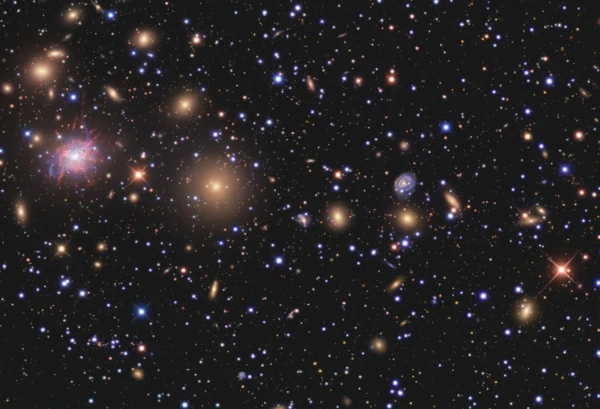 Why are Galaxies, Unlike Stars, So Close to Each Other?
Why are Galaxies, Unlike Stars, So Close to Each Other?  Galaxies
of the Local Group
Galaxies
of the Local Group  The hidden galaxy, one of Euclid's first images
The hidden galaxy, one of Euclid's first images  The Virgo Cluster spans approximately three Full Moons
The Virgo Cluster spans approximately three Full Moons 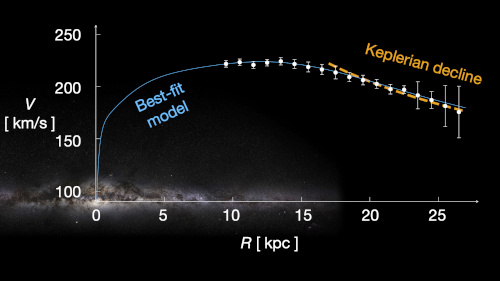 Where did the dark matter in our Galaxy go?
Where did the dark matter in our Galaxy go? 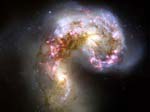 Merging galaxies and black holes
Merging galaxies and black holes  Mirages created by gravitational lenses
Mirages created by gravitational lenses  Mystery of the Big Bang, the problem of the horizon
Mystery of the Big Bang, the problem of the horizon 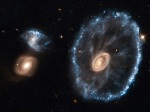 Cartwheel Galaxy Cosmic Event
Cartwheel Galaxy Cosmic Event 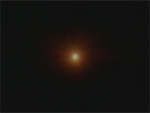 The first second of our history
The first second of our history 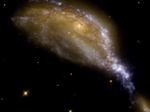 A small galaxy tears apart the large NGC 6745
A small galaxy tears apart the large NGC 6745 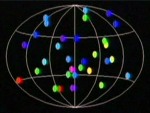 The mystery of gamma bursts
The mystery of gamma bursts 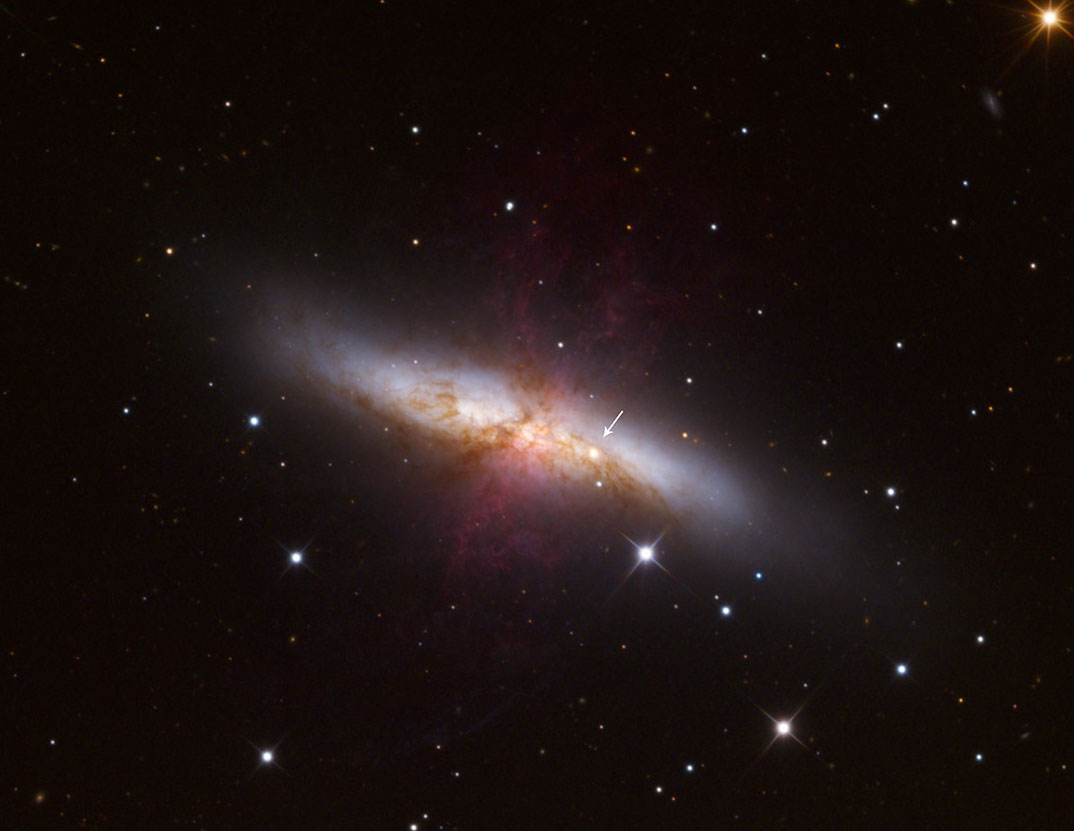 The Cigar Explosion
The Cigar Explosion 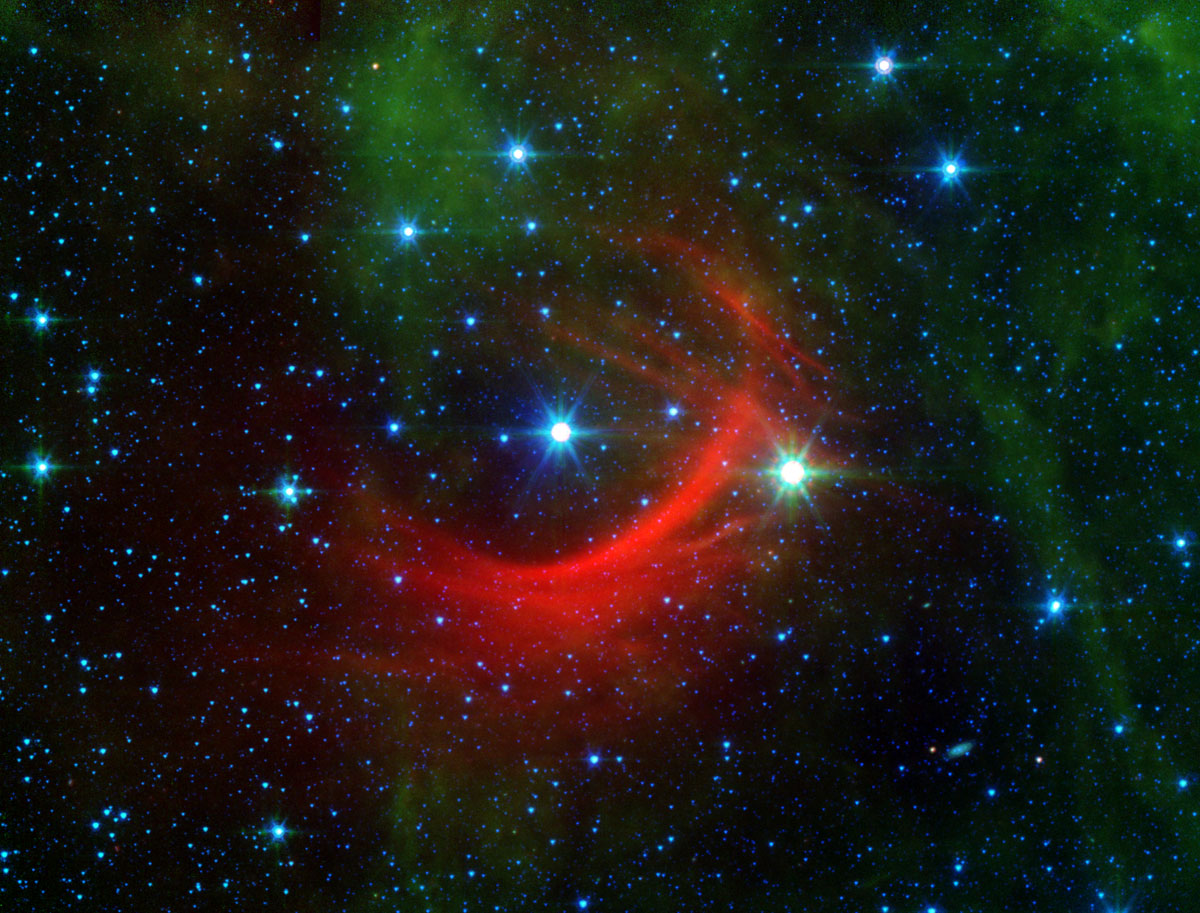 Shockwaves
Shockwaves
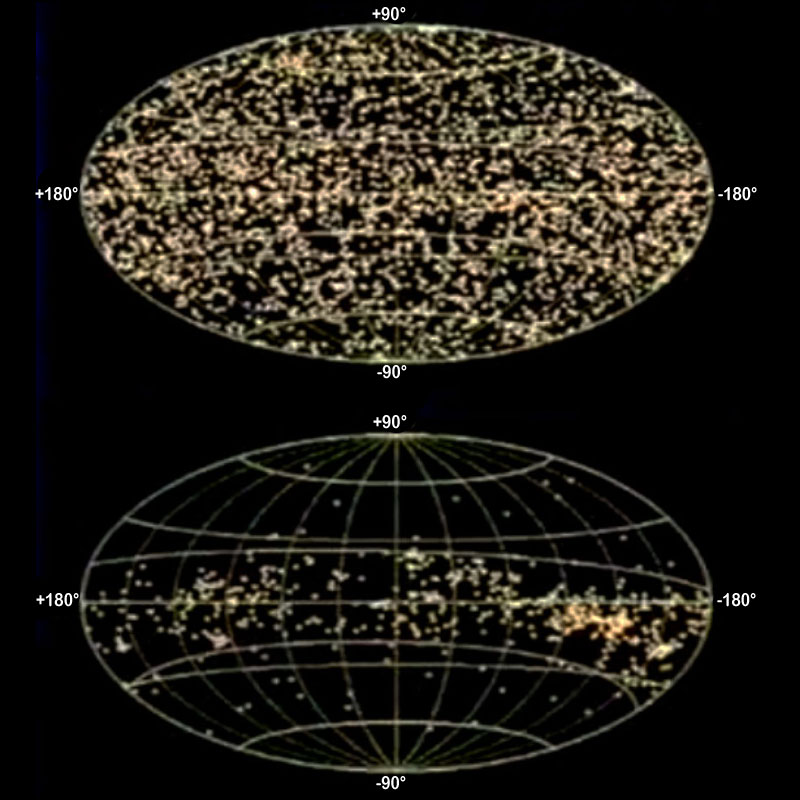 Gould's belt, a stellar fireworks display
Gould's belt, a stellar fireworks display 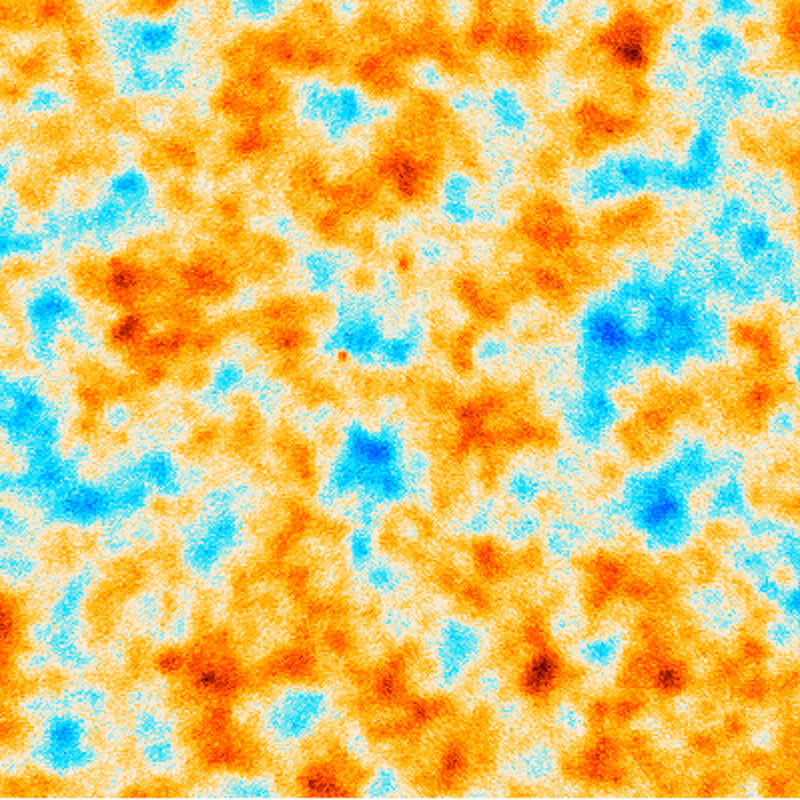 Recombination
in cosmology
Recombination
in cosmology 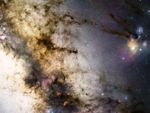 Journey to the center of our galaxy
Journey to the center of our galaxy 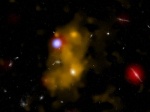 Lyman-alpha
bubbles
Lyman-alpha
bubbles 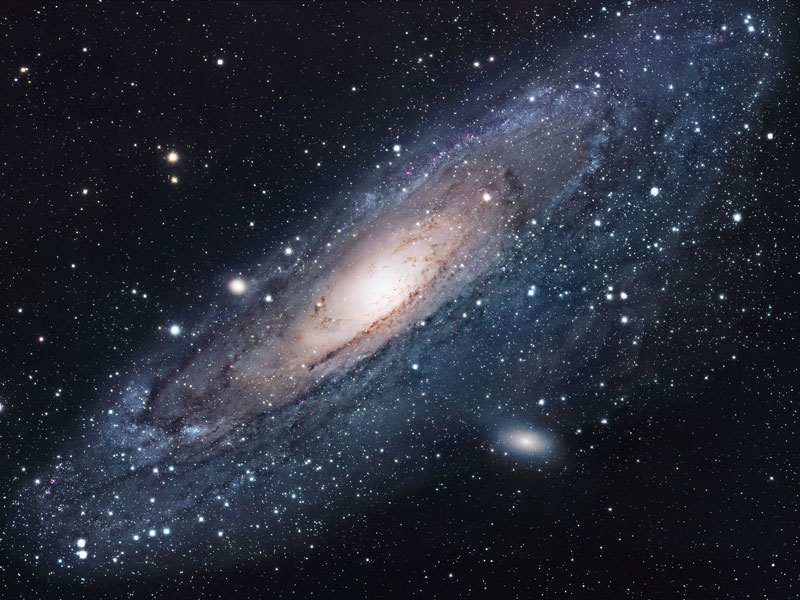 Andromeda in the ultraviolet
Andromeda in the ultraviolet  The most beautiful galaxy clusters
The most beautiful galaxy clusters 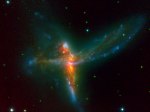 Tinkerbell merger of three galaxies
Tinkerbell merger of three galaxies  A gigantic black hole
A gigantic black hole 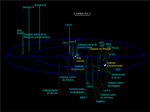 Enigma
of coplanar galaxies
Enigma
of coplanar galaxies 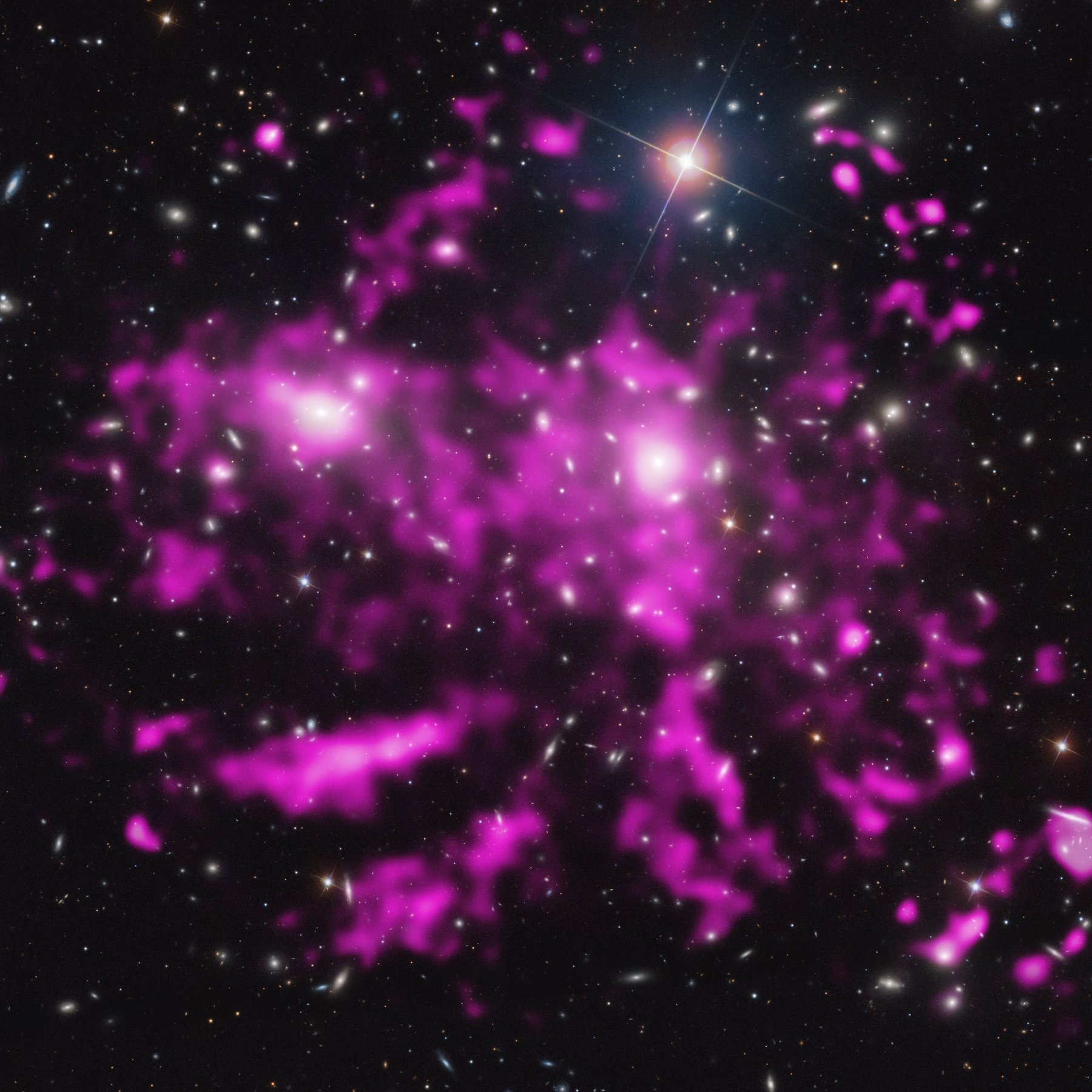 The cluster of galaxies Coma in its soup
The cluster of galaxies Coma in its soup 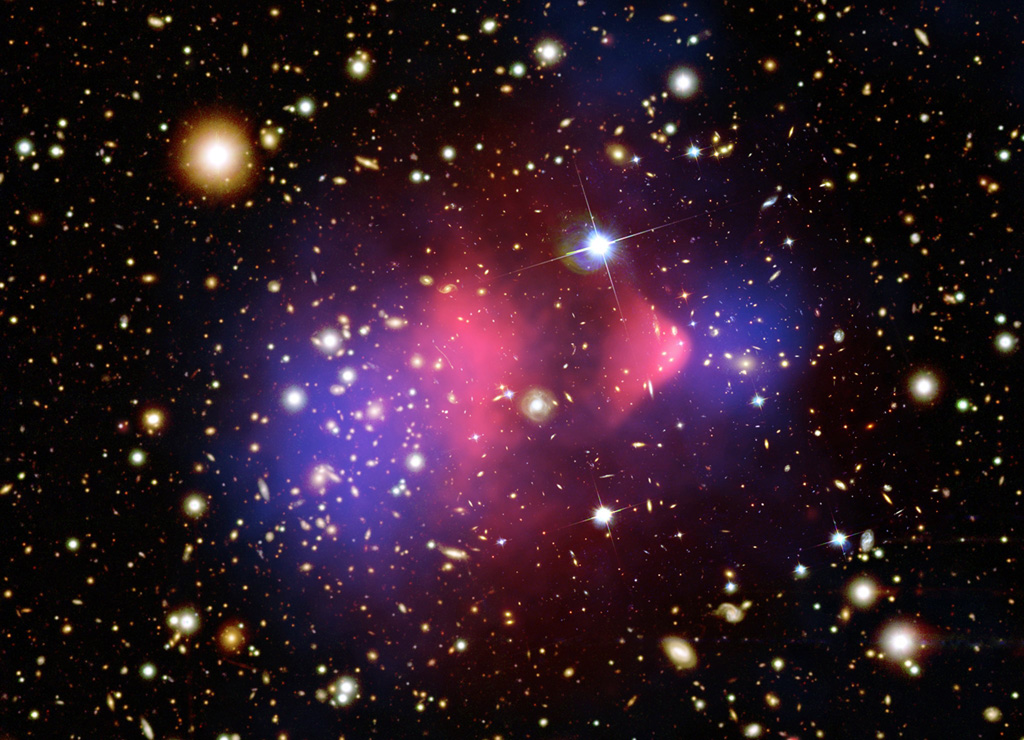 The cannonball, proof of dark matter
The cannonball, proof of dark matter 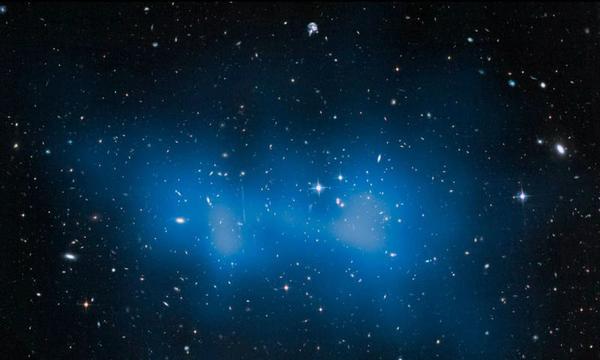 El Gordo galaxy cluster
El Gordo galaxy cluster 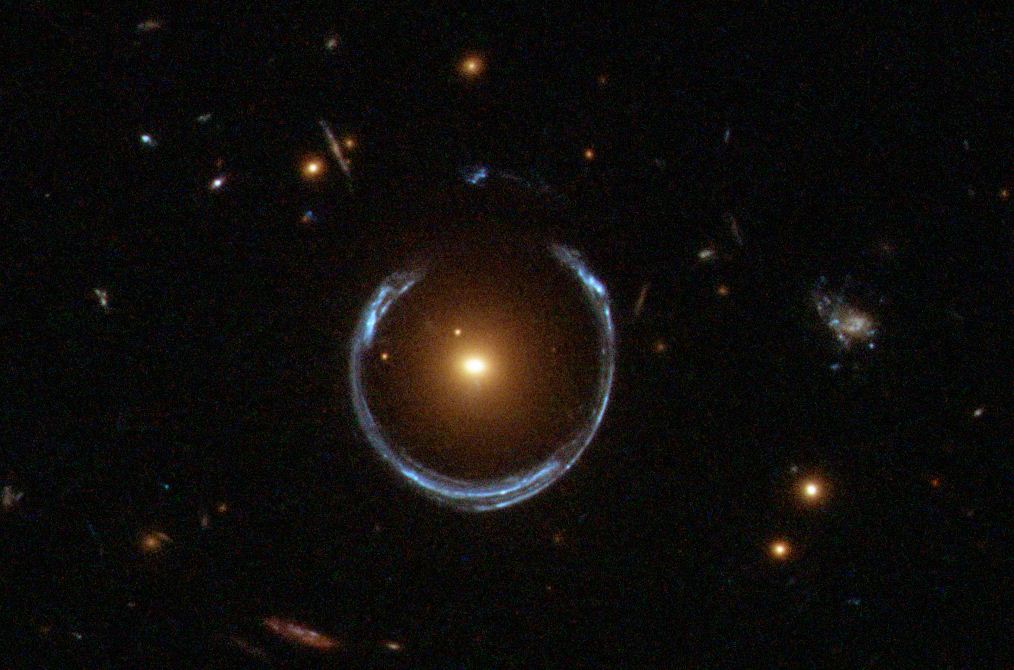 Einstein
ring and cross
Einstein
ring and cross  How to measure distances in the Universe?
How to measure distances in the Universe?  The Hubble sequence and types of galaxies
The Hubble sequence and types of galaxies 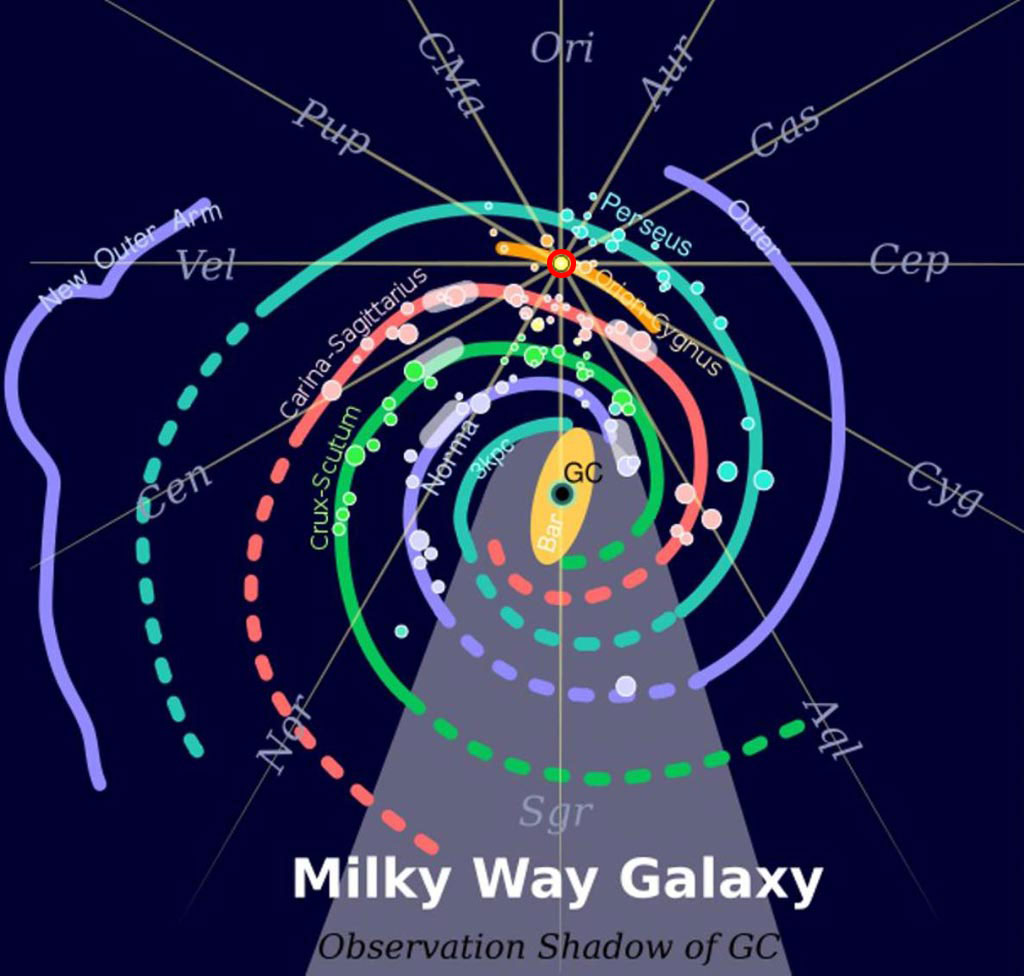 The spiral shape of the galactic arms
The spiral shape of the galactic arms 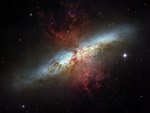 Even more stars, the Cigar galaxy
Even more stars, the Cigar galaxy 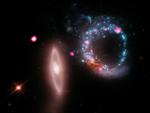 The
Universe of X-rays
The
Universe of X-rays 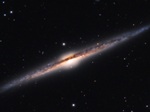 The most beautiful galaxies
The most beautiful galaxies 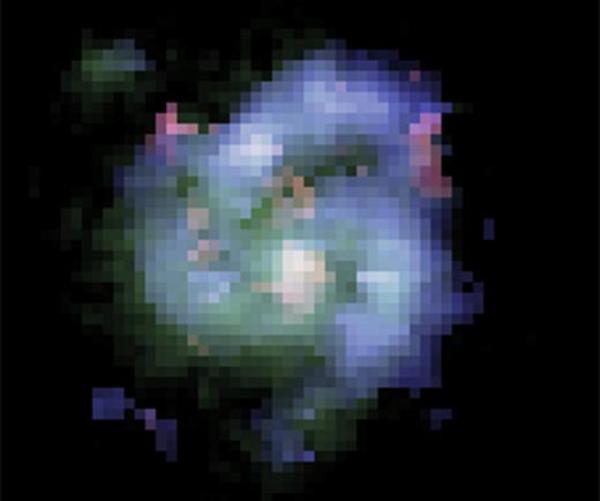 The oldest galaxies in the universe
The oldest galaxies in the universe 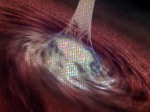 Quasars
the nuclei of galaxies
Quasars
the nuclei of galaxies  Sagittarius A black hole at the center of our Galaxy
Sagittarius A black hole at the center of our Galaxy 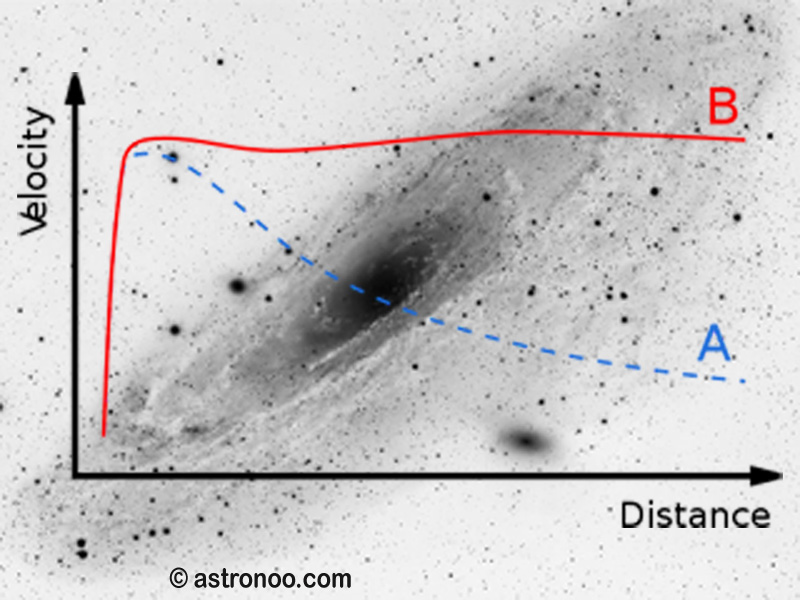 The MOND theory and its contradiction
The MOND theory and its contradiction 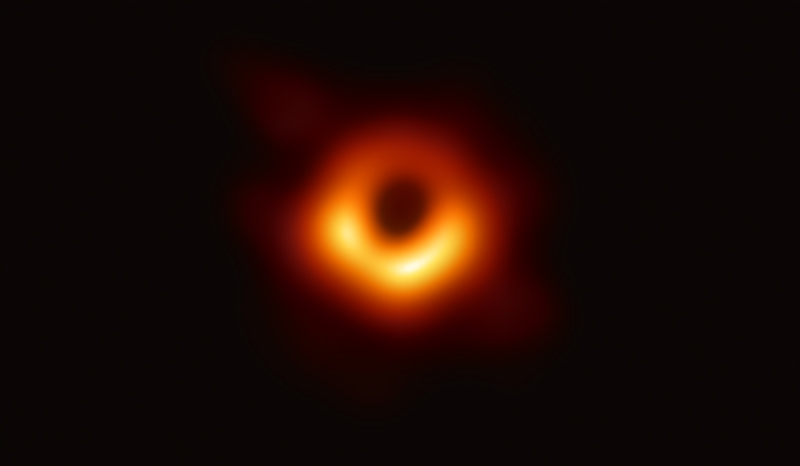 The first image of a black hole
The first image of a black hole  Central
area of the Milky Way
Central
area of the Milky Way 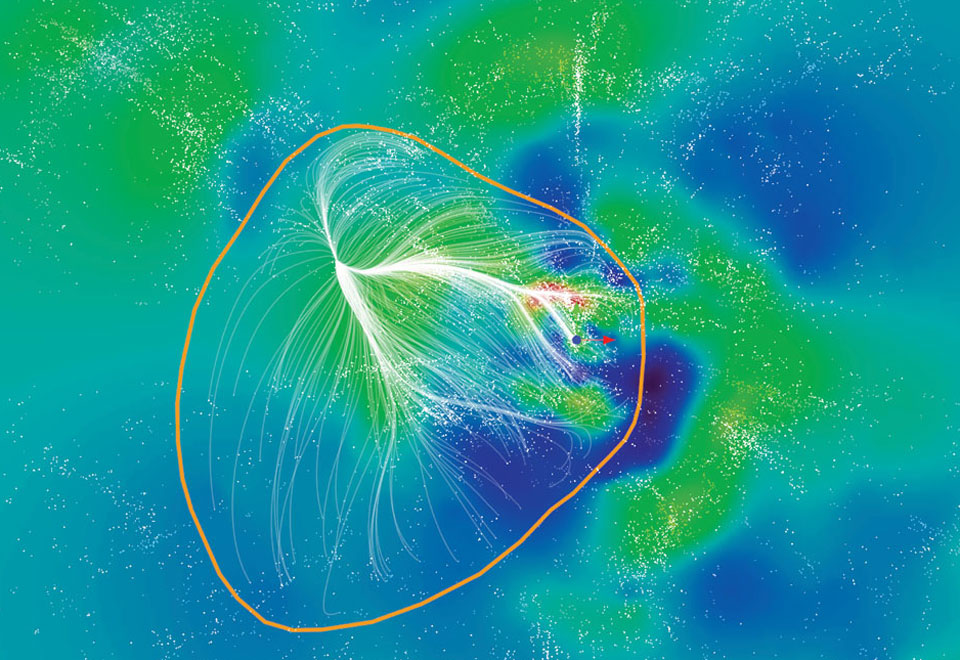 Laniakea, our supercluster of galaxies
Laniakea, our supercluster of galaxies